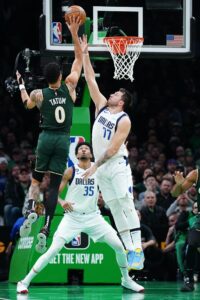So far this season, 19 of the NBA’s 30 teams have played at least .500 basketball, and many of the clubs that have fallen short of that mark are ones we expected to do so. The Magic, Pistons, Hornets, Rockets, Spurs, and Thunder, for instance, were widely considered during the preseason to be lottery-bound.
If we set aside those six teams, along with the 19 who are .500 or better, five clubs remain. These are the teams that entered the season expecting to be in the playoffs and have fallen short of their expectations so far.
Let’s start with the most obvious one of the five: the Lakers got off to a miserable start to the season, losing their first five games and 10 of their first 12. They’ve bounced back to some extent as of late, winning six of their last eight contests, but three of those victories came against San Antonio, and L.A. is still just 8-12 overall, good for 13th in a competitive Western Conference.
With Russell Westbrook adapting well to a sixth man role, Lonnie Walker enjoying a breakout year, Anthony Davis looking like a superstar again, and LeBron James back in the lineup following a groin strain, there’s some reason for optimism in Los Angeles. But it’s still not clear if the supporting cast is strong enough for the Lakers to make a real run, and it remains to be seen whether the front office has the appetite to move one or two first-round picks to acquire real upgrades.
While they’re ahead of the Lakers in the standings, the 10-11 Mavericks are currently out of the play-in picture too, holding the No. 11 seed in the West. Like L.A., Dallas has a top-heavy roster, with Luka Doncic submitting an MVP-caliber performance this fall. But Doncic can’t do it all himself, and the Mavs’ supporting cast beyond Christian Wood and Spencer Dinwiddie hasn’t produced like the team had hoped.
Over in the East, the Heat (10-12), Knicks (10-12), and Bulls (9-12) find themselves out of the top nine and vying for the No. 10 spot in the standings.
Of these three teams, Miami probably has the most reason for optimism. The Heat have been hit hard by the injury bug in the first quarter of the season, but appear to be getting healthier, with All-Star forward Jimmy Butler on the verge of returning. This iteration of the Heat may not get back to the NBA Finals like the 2020 squad did, or even to the Eastern Finals like last year’s team, but it would be pretty shocking if they missed the postseason, given how much talent is on the roster.
Chicago and New York, meanwhile, were both considered borderline playoff teams entering the season — oddsmakers had them as the East’s ninth- and 10th-best teams ahead of training camps. So it’s perhaps not a surprise that they’re both hovering around .500 and looking more like play-in contenders than serious candidates for a top-six seed.
Still, both teams had higher aspirations than simply contending for a play-in spot, so it will be interesting to see how they approach the trade deadline if their inconsistent performances continue.
Will the Knicks put some of their future first-round picks back on the table in search of an impact player after missing out on Donovan Mitchell? Will the Bulls – who have already traded away two of their own future first-rounders – continue to push their chips into the middle of the table or will they pull back and hope for the possible return of point guard Lonzo Ball can help fuel a second-half surge?
We want to know where you stand on these five teams. Do you expect the Lakers, Mavericks, Heat, Bulls, or Knicks to finish the season as a top-six seed, securing an automatic playoff berth? Are you counting on some of them to have to clinch postseason spots via the play-in tournament? Will some finish outside the play-in altogether as bottom-five teams in their respective conferences?
Head to the comment section below to share your thoughts!
 Still, Jokic ranks behind two players that remain atop Wright’s list for a second consecutive week. At No. 1, it’s Mavericks guard
Still, Jokic ranks behind two players that remain atop Wright’s list for a second consecutive week. At No. 1, it’s Mavericks guard